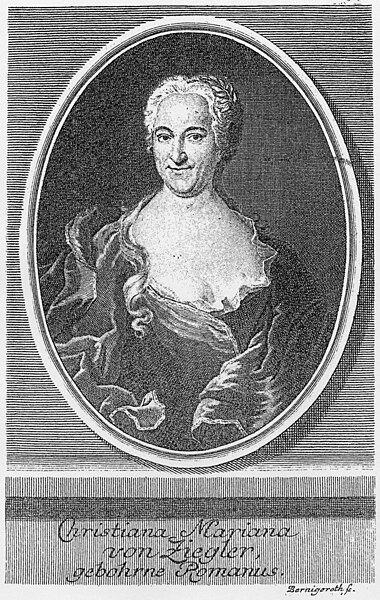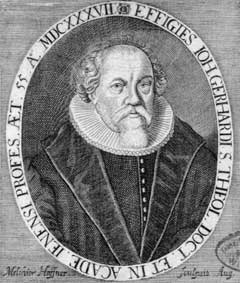Happy Reformationtide, everyone!
I know most people today commemorate the date of Martin Luther's theological revolution as October 31, 1517: the posting of the 95 Theses about indulgences on the local church door. Still, I think the real Reformation didn't officially occur until 1523, in conjunction with the release of his Latin
Formula missae. Here is why.
Lex orandi, lex credendi exemplifies
Martin Luther’s concept of reform – the law of the church’s worship is
sequentially the law of its confession. In his time, such a worship gathering would be
riddled with what he calls the “three serious abuses”: the silencing of biblical preaching, the
prominence of saintly reverence instead of God-directed praise, and the act of
sacrificing Christ’s body and blood as an offering.
In publishing his
Formula missae of
1523 (hereafter FM), Martin Luther strongly furthered reform in the Protestant
church merely by adjusting the liturgical practices. Specific ways in which this is clearly seen
are his inclusions of Scriptural preaching, congregational singing, and
omitting the canon of the mass.
At the heart of
Luther’s method for the Reformation lied his authoritative precedence toward
the Bible over the papacy. Where the
Word openly refuted what the pope decreed, he sided with the Holy
Spirit-inspired writings in place of allowing Rome the right to change
them. For example, Jesus replied on the
contrary to papal authority when answering the scribes and Pharisees. “He answered and said to them, ‘Why also do
you transgress the commandment of God because of your tradition? For God
commanded…’”
The primary issue with which Luther
dealt was pride;
over time, the church became
increasingly awed by and submissive to the liturgical leaders, being assisted
by the political rule they also held.
Where God’s commands and promises interfered with their quest for power,
the Roman Catholic church refused to comply.
St. Paul writes to Timothy, “Preach the word! Be ready in season and out of season. Convince, rebuke, exhort, with all
longsuffering and teaching (emphasis
mine).” Not mere words of Holy Writ are referred to
here, but using them as a springboard for discourse and a tool to reach people’s
sinful hearts and lives. He later urges,
“Let the word of Christ dwell in you richly in all wisdom, teaching and
admonishing one another in psalms and hymns and spiritual songs, singing with
grace in your hearts to the Lord.”
The instinctive reaction of the believer
to hearing the pastor should include supplementing that with music, since godly
lyrics and melody fall under their own special didactic form. Finally, returning to the very words Christ
uses to bless the bread and wine,
…As they were
eating, Jesus took bread, blessed it and broke it, and gave it to the disciples
and said, “Take, eat; this is My body.”
Then He took the cup, and gave thanks, and gave it to them, saying,
“Drink from it, all of you. For this is
My blood of the new covenant, which is shed for many for the remission of sins”
(Matthew 26:26-28).
Luther saw that the words of
institution were what they were on the simplest level; the only sacrifice
occurring here was the Lord kindly offering His body and blood to His disciples as strength and
comfort, for them to cling to in assurance of their forgiveness. By His simple phraseology, “Take…drink,”
Jesus’ only intent is that His sin-sick followers go ahead and share in His
supper, not give it back as an unbloody payment.
Basing his new
worship order on these solid precepts, Luther furthermore demonstrated his
humility before the Lord. If he sought
glory and renown before the people of his day, he would have decided to keep
the new revision in compliance with the old, or not tried to change it at
all. On the contrary, the theologian
remarks, “One should not plan and order something unless he is certain it is
pleasing to God. One should also not
make reason supreme in such matters, for if He our Lord is not the author,
nothing good can come of it.”
In
regard to the first point, prior to the Reformation, churches did not hear much
individual preaching from the priestly clergy.
Instead, the only preservation they had of the true Gospel was in the
historic lectionary readings, set up during the early Christian era and used
for centuries. However, Luther
understood that the utilization of a pastor to expound biblical doctrines could
also be edifying, and inserted a sermon on one of the texts between the Nicene
Creed and the Preface. In addition to the homiletic portion, Luther
additionally advocated the continuation of the daily Psalm readings, as he had
practiced in the monastery. While the essential
eight Daily Office hours were reduced to two (Matins and Vespers), the
frequently scheduled meditations on the Bible stayed a laudable tradition. In differentiation to the current usage,
Luther wrote, “The reading of the Epistles and Gospels is
necessary, too. Only it is wrong to read them in a language
the common people do not understand.”
Once again, the Catholic way was permissible as long as it was clarified and
not hidden in mystery, to which the early church fathers would have surely
disapproved. “Luther saw his reforms not
as the unilaterally instituted ideas of an individual, but rather as a reform
within the church catholic that sought to demonstrate whenever possible the
continuity between itself and the whole history of Christian worship and piety.”
Attempts before this by the Radical reformers to create a new mass setting
ended up to be misleading in that they sought to do the opposite of what the
Roman church practiced, including alternate vestments and iconoclasm.
On its own, the liturgy was not the problem, but the false doctrine mixed in to
usurp the truth.
Secondly,
before Luther’s reforms there were limited hymns or other opportunities for the
people to sing in a church service.
Rather, the officiant would perform all of the reading, praying and
chanting, nearly turning the Sunday morning time of worship into a spectator
event. As Luther realized, this method
is not the way to keep the laity engaged or connect their own faith with what
was occurring in the service. He
understood that by singing Christians were also teaching themselves the Word,
at the same time publicly confessing their faith and engraving Scriptural truth
in their hearts via the music. The more
ways in which an individual can learn something, the more deeply he or she
remembers it, and in a likewise manner it happens when the Gospel is spoken,
heard, read, sung, and taken in all at once. In the strictest sense, the FM is completely
accompanied by the acapella choir, with an
active listening part by the
congregation. Yet, Luther indicates that
he would “wish for us to have as many vernacular songs as possible that the
people could sing during the mass either along with the Gradual or along with
the Sanctus and Agnus Dei.”
The educated class of the day spoke Latin as their primary language, but where
a peasant audience may join in, the German component would be a helpful
addition.
Lastly,
the key difference with the FM as compared to the previous Roman order of
worship is the removal of the canon of the mass. This lengthy, special prayer chanted under
the breath of the priest entirely altered the direction of worship, sacrificing
once more Jesus’ body and blood rather than receive it graciously as a
sacrament. How close and yet how distant
were the clergy; the very elements which God intended to bring them His
forgiveness as a means of grace they considered an object of reoffering to
appease His anger. Nevertheless, Luther
retained as much as he possibly could of the Catholic mass, even the elevation,
which he kept due to the people’s hesitation at the reintroduction.
In reference to the
Deutsche Messe, the 1526 German rendering of the FM, Luther states,
“The Elevation we do not wish to abolish but to maintain, since it coincides
very well with the German Sanctus and signifies that Christ has commanded to
remember Him.”
In
Lutheran practice, this stood for honoring Christ’s death on the cross to pay
for the world’s sins, not a misdirected, merit-minded adoration of the
host. Jesus’ words of institution were
still chanted during the consecration, and Luther seemed to direct that each
form
should be served directly after,
with the Sanctus, Agnus Dei, or hymns meanwhile sung for spiritual edification.
There
is not a great deal of disparity between the modern Lutheran Divine Service
found in many American hymnals and the FM of Wittenberg. In Luther’s day, the confession and
absolution consisted of the Kyrie, found in the sermon, or administered
personally by the pastor.
Today, however, the first item spoken in
its modern counterpart is the confession, with the forgiveness of sins declared
immediately following. Elevation is
generally obsolete due to its Catholic implications, but the church now
partakes of both the bread and wine without reluctance. What is more, the amount of chant versus
spoken readings varies between congregations, and post-Vatican II, the Old
Testament lesson may now follow the Collect.
Another addition of which Luther would definitely have approved would be
the prescribed inclusion of hymns, at least for the opening, before the sermon,
and in conclusion. One of the reasons
why he may not have dictated them specifically would be the lack of resources
available then in 1523 – the rich selection of Lutheran chorales accessible now
were as of then unwritten. Still, the
promotion of godly poetry set to music that the laity could finally utilize to
teach themselves is perfectly in line with Luther’s goals.
The directions for
a worship service as laid out in the FM were meant to be a “description, not a
prescription.”
If every minute detail of the liturgy would
imply something of adiaphora or man’s preference, Luther knew that humanity’s
natural leaning would be toward the man-made add-ons, and they could
very well overrule the “one thing needful,”
namely, faith in Jesus Christ. On the positive viewpoint, with enough time
and distance, the church has progressed through to the point where Luther
desired to see it, as outlined in the Wittenberg church orders. On a Sunday morning, one can readily find a
group of Lutherans freely hearing the Word, singing the biblical liturgy and
hymns, and eating and drinking the Lord’s Supper as a sacrament, not a
sacrifice. This lies in stark opposition to the
disastrous condition of the 16th-century church, attending worship
without biblical interpretation, concentrated in the lives of the saints, and
centered around the canon of the mass.
All in all, by presenting his Wittenberg congregation the Formula missae in 1523, Martin Luther effected a reformation
to orthodoxy that lasts until today.

Works Cited:
Forell,
George W., Harold J. Grimm, and Theodore Hoelty- Nickel. Luther and Culture. Decorah, IA:
Luther College Press, 1960.
Halter,
Carl and Carl Schalk. A Handbook of
Church Music. St. Louis: Concordia Publishing House, 1978.
Herl,
Joseph. Worship Wars in Early
Lutheranism. New York: Oxford University Press, 2004.
Lull,
Timothy F., ed. Martin Luther’s Basic
Theological Writings. Minneapolis:
Fortress Press, 1989.
Schalk, Carl. Music in Early
Lutheranism. St. Louis: Concordia Academic Press, 2001.
The Holy Bible, New King James
Version. Nashville: Thomas Nelson, 1982.
Lull, Timothy F., ed. Martin
Luther’s
Basic Theological Writings. Minneapolis:
Fortress Press, 1989, 445.







